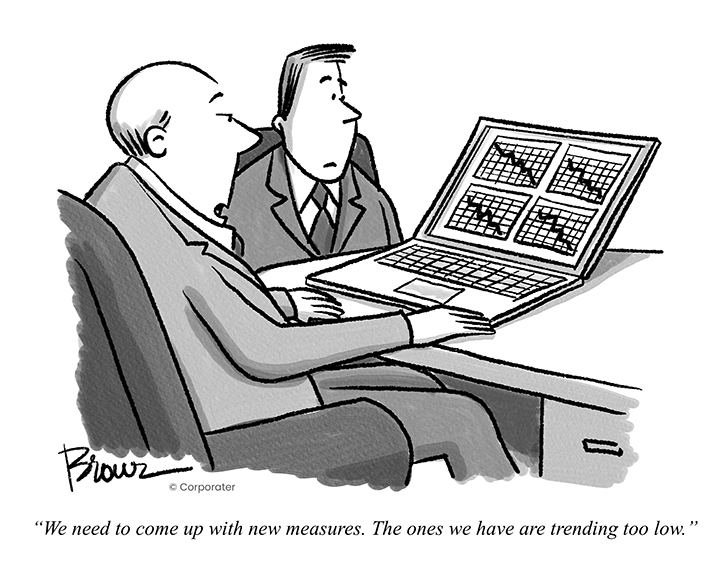
Paul was channel surfing recently and came across the 2000 film High Fidelity starring John Cusack as Rob, a thirty-something record-store owner in Chicago. Rob loves compiling lists and ranking things. In fact, the movie centers around the list of his “Top 5 Breakups.” He and his coworkers have spirited debates about myriad other topics as well, and it’s clear they’ve put serious thought and consideration into their choices when stitching together personal rankings. While watching, Paul drifted back to work mode for a moment and wondered: Do organizations put that much thought into choosing their measures of success?
That may seem like a silly question. Of course, teams and individuals devote significant mental energy to selecting their measures. Right? Maybe not. The primary reason we suggest this is the sheer number of measures (or key results in the OKR world) attached to objectives. It’s not uncommon to have six, seven, eight or more tied to a given objective. If you’ve done even a cursory amount of research on performance measurement, you know the importance of measuring what matters. It’s all about focus — homing in on the critical elements of success.
Here are three reasons that measures accumulate, and what you can do about it.
- Mistaking tasks or activities for measures
This is something we see frequently. When crafting measures, writers will list not only the ultimate outcome; the evidence of success on the objective, but every granular step necessary to reach that outcome. To differentiate between a task and a measure, use this simple test: If you can accomplish the action in a relatively short period of time, it’s more likely a task than a true measure. And if you do find yourself listing tasks, ask, “What will happen when I complete these tasks?” Doing so will lead to a quantitative measure. - FOMO
Which stands for “fear of missing out.” Broadening that just a bit, some measurement drafters simply don’t want to leave anything out. They feel it’s safer simply to list every possible result, regardless of whether it provides evidence of achievement of the objective or not. As noted above, focus should be your aim here, not quantity of metrics. - Busy bee syndrome
There are those among us who will use the measurement process as a stage to demonstrate how busy they are. These martyrs will create multiple objectives, each with a mountain of measures, the totality of which quickly ascends to an impossible number of items to accomplish in the given timeframe. Always remember, measures are not meant to showcase your crushing workload or provide a glorified to-do list.
A favorite quote of ours comes from a book titled How To Think Like Leonardo da Vinci. And who wouldn’t want to think like one of the greatest polymaths in history? The book’s author Michael Gelb has this to say about the task of making difficult choices: “The discipline of ordering … the discipline of choosing one over another, ranking one a level higher than another, and then articulating why you chose the way you did requires a depth and clarity of consideration and comparison that inspires richer appreciation and enjoyment.”i There is no better way to describe the arduous, but ultimately rewarding, process of selecting objectives and measures of genuine value. Although it’s a difficult assignment, the hard work of making the demanding choices will leave you with a richer appreciation of what you do select.

